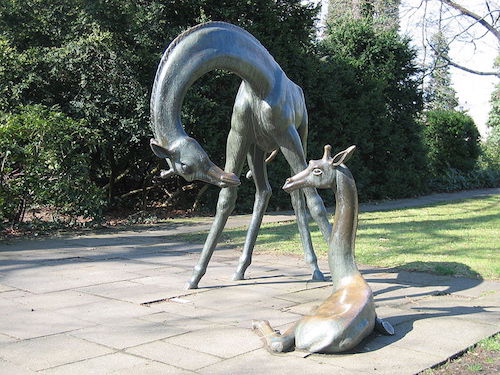 Evolution
Evolution
 Intelligent Design
Intelligent Design
The Giraffe as Artwork

German biologist Wolf-Ekkehard Lönnig studied mutations for over twenty years at the Max Planck Institute for Plant Breeding Research in Cologne. Based on that research, he wrote a two-part, 130-page scientific work, The Evolution of the Long-Necked Giraffe, that looks in great detail at the physiology, behavior, and natural history of giraffes.
When I first read it several years ago, one sentence in this technical treatise especially captured my attention. Lonnie analyzes many Darwinian attempts to explain biological features and behavior of giraffes in terms of the advantages they might convey for survival — for example, the famous claim that the neck is long because it provides an advantage in reaching the higher leaves of the trees giraffes feed on. He shows that all are false or unsupported by the evidence. Then he concludes, on page 32 of the second part: “If, on the other hand, one views Nature as ingenious artwork that cannot be reduced to the question of utility alone, these problems disappear.”
Although he quotes a zoo curator as saying “The day I find a woman with eyes as beautiful, I’ll get married,” Dr. Lönnig — a well-known proponent of intelligent design — did not intend his comparison of the giraffe to ingenious artwork as a poetic or metaphorical statement. He meant it as a serious scientific statement, an explanation for the otherwise inexplicable origin of giraffes.
Giraffes, elephants, zebras, tigers, parrots, bald eagles, whales, and rhinos as artwork, rather than just victors in the eternal struggle for survival? Now there’s a revolutionary scientific point of view!
Image by Stern [GFDL or CC-BY-SA-3.0], via Wikimedia Commons.
